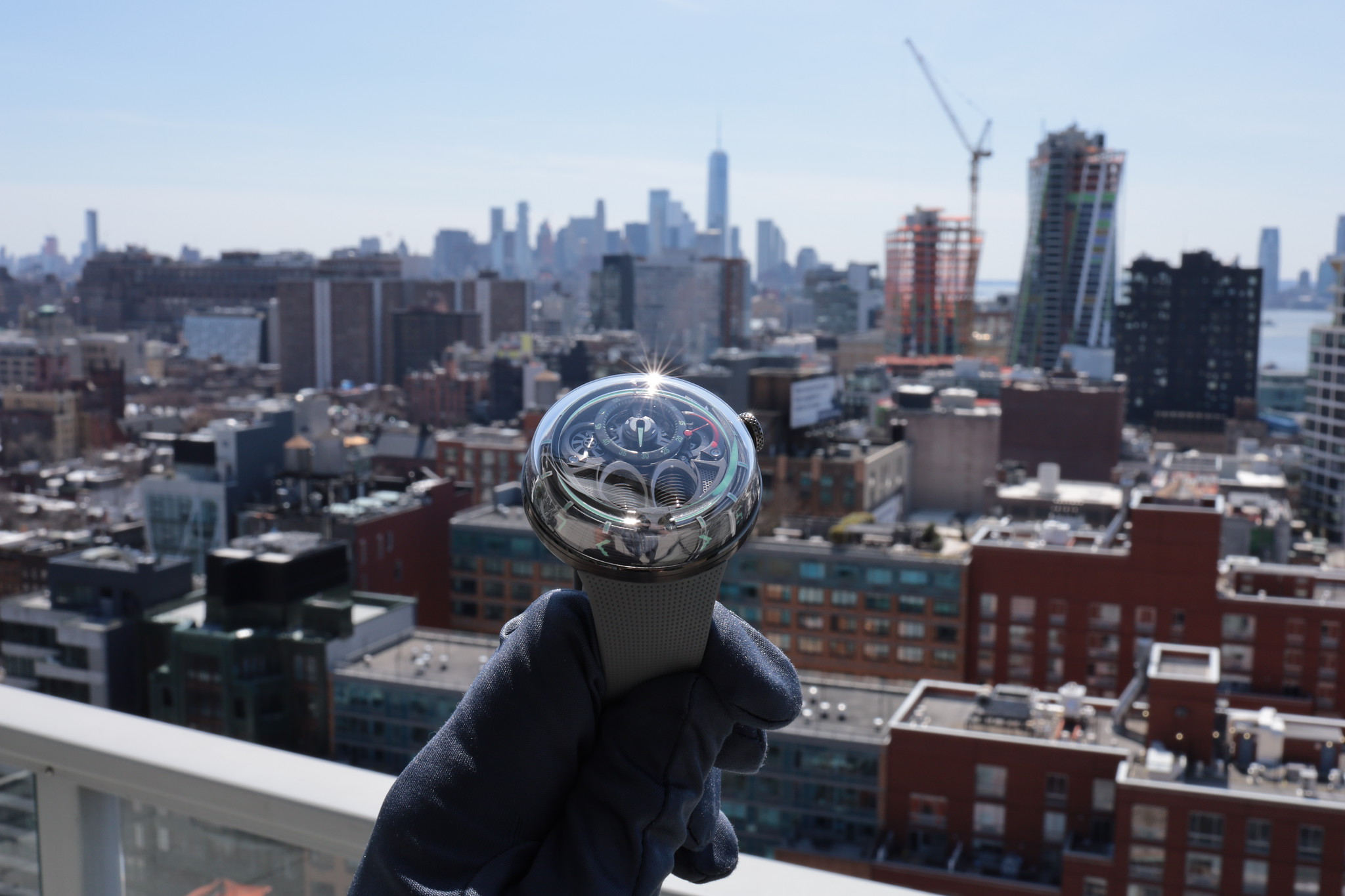HYT, a young independent watch company specializing in fluid timekeeping, presented their existing product line last week in New York City, at the Glasshouses.
Fittingly, the event space they chose, which according to the company’s website is “a collection of technologically-advanced high-rise event spaces in New York City” was spread out across the entire 21st-floor penthouse, and right when you walked off the elevator, there was light pouring in from all sides, thanks to the floor-to-ceiling glass windows all around, kind of like the glass all around an HYT watch cases.

According to Wikipedia, “fluidics, or fluidic logic, is the use of a fluid to perform analog or digital operations similar to those performed with electronics. The physical basis of fluidics is pneumatics and hydraulics, based on the theoretical foundation of fluid dynamics.”
The very first fluid timekeepers date back to the 2009 Concord C1 Quantum Gravity timepieces (Concord is no longer in operation) that had a similar fluidic concept. The first HYT watch, the H1, came out at Baselworld 2012. At the time, Vincent Perriard (who was also formerly the CEO of Concord) founded and ran the company, along with his business partners.

Perriard is no longer there, but the timepieces essentially work the same: two bellows located at 6 o’clock pump fluid in and out of the hour display tube that runs around the circumference of the dial, which is adjacent to the hour markers, allowing you to read the current hour. Minutes are displayed in the center, and then there is an off-center running seconds indicator or hand.
All of HYT’s fluid-mechanical movements are made exclusively for HYT by either Chronode or APRP. And while the timekeeping is pretty basic – hours, minutes, seconds – there is really only one place they can go if the fluid components need to be repaired, meaning the cost to maintain will be very high. Not to say that high-end watches from say A. Lange & Sohne or Vacheron Constantin would be cheap, but at least with those, you could opt to have them serviced outside of the official repair centers to save some money. That said, any high-end watch is going to have higher repair costs compared to volume watches, just like a Ferrari costs more to repair than a Honda.

Verdict
In the seven years since the original HYT H1 was launched, the watches have become sleeker, more refined, and they’re now completely encased in a huge domed sapphire glass crystal. HYT watches are big (48.8 mm x 18.7 mm is the smallest size) and sit high on your wrist, and they’re never going to fit under a shirt cuff — but they’re sure to make an impression.

With a price tag starting at $39,000 HYT watches are expensive but not outrageously priced in the context of high-end watches, yet they’re also far from accessible to anyone making say, less than a million a year.

If you want a watch that you can resell for break-even or a profit down the road, this is not the watch. You’re better off going with an investment-grade Patek Philippe or Rolex. These are, however, playful and unique and guaranteed to draw attention, much like pulling up in a Lamborghini will do, just on your wrist.









